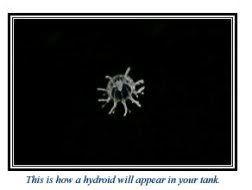zeke92
Active Member
I was SOOO close to being able to get them! I had just told my mom it's about time to buy horses and then i walk downstairs and see my walls covered in tiny tentacled death machines.

But first off i have a question. Mine look like white specs with tentacles. But what i read on here and everywhere else people talk like they are wierd things growing on rock in giant colonies and killing stuff. Did i ID these things wrong all these years? What do i have?
More importent question: How do i kill these stupid things?
 since i can just take the snails out, there is nothing else besides bacteria in there, is there any easy/fast ways to kill hydroids in an empty tank?
since i can just take the snails out, there is nothing else besides bacteria in there, is there any easy/fast ways to kill hydroids in an empty tank?

I really don't wanna do this Fenbendazole stuff i read about and wait another two weeks







But first off i have a question. Mine look like white specs with tentacles. But what i read on here and everywhere else people talk like they are wierd things growing on rock in giant colonies and killing stuff. Did i ID these things wrong all these years? What do i have?
More importent question: How do i kill these stupid things?


I really don't wanna do this Fenbendazole stuff i read about and wait another two weeks











